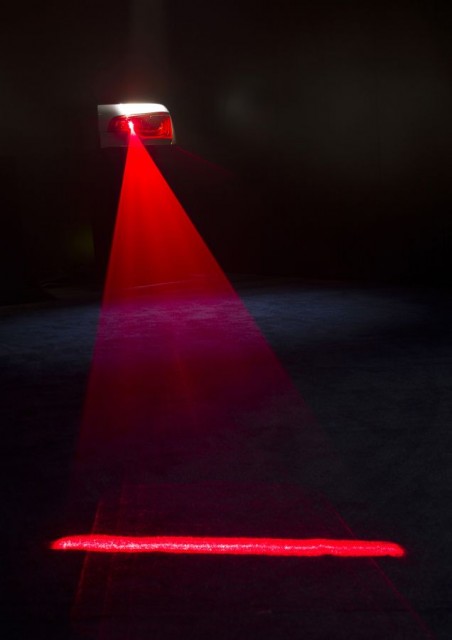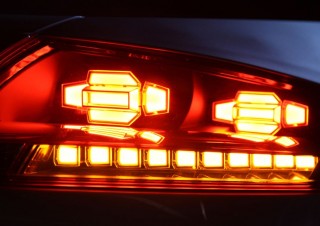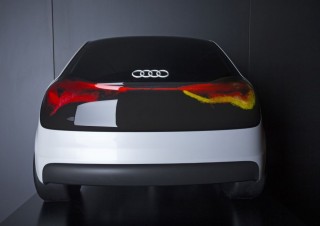Audi Matrix LED headlights
This phrase is often repeated by Audi at various other shows, Audi says its represents headlight technology of the future. The “Matrix Beam” principle is about dividing the LED main-beam headlight into a large number of individual segments. There are two primary applications of such technology. One, there’s no need for a swivelling mechanism to turn the entire headlamp to light up a corner, two, parts of the light beam itself can be dimmed out to prevent dazzling drivers of cars in the oncoming traffic lane. This is done by switching on/off or dimming the small individual diodes that make up the Matrix. These small diodes are backed by lenses or reflectors to provide excellent illumination without needing a swiveling mechanism.
The Matrix LED setup uses information from a camera, the navigation system or other additional sensors. As mentioned earlier, the headlights can fade out appropriate areas on the high beam when the camera detects a car travelling in the opposite direction. Audi goes as far to say that the system can also illuminate the areas between several vehicles in complex situations. Like Cornering Headlights Audi can use navigation data to enable the high-beam headlight to anticipate the bend and swivel (not mechanically, but using the reflectors, if we aren’t wrong in out interpretation) to illuminate the road before the driver has even turned the wheel.
With the advent of such flexible lighting technolgy comes the inevitable benefits of stunning new styling of headlights. Audi says the challenges faced will be extremely low tolerances during manufacture and assembly of the components, the methods used to energize the headlights and control them independently, along with the overall efficiency of the package, the uniformity of the conical light beam and the airflow path through the headlights. Audi states proudly that it is in a position to take up these with the confidence that all this tech will be introduced on production cars.
Laser tail light
Audi has put to work a laser diode at the rear which lays down a virtual stop line for vehicles behind. The fan-shaped laser tail light shines slightly downward and looks like a red line on the road, which Audi hopes will prompt the driver behind to keep distance. In bad visibility conditions, like fog or spray, the laser beam strikes the water droplets in the air and makes them visible while the virtual stop line is seen as a triangle. The laser tail light looks like a large warning triangle! We like the concept, a lot.
OLED technology
OLEDs use organic materials instead of the semiconductor crystals used in LEDs. If you own a smartphone with an AMOLED screen, you’ve probably experienced the benefits of OLEDs. OLED TVs are the next big thing in television. Audi wants to adopt this tech for external lighting on their cars of the future. Audi claims OLED makes external lights attractive as well as intelligent. These lights can be programmed to react to an approaching driver, follow his or her movements and highlight the main contours of the vehicle or the door handle.
OLED Swarm
Audi engineers have designed a vehicle’s rear end as a large, continuous light surface, with innumerable small points of light flickering like a swarm of fish. The OLEDs can be programmed so that when a right turn is made, they flow to the right, or when the car is braked, they flow rapidly forwards! The swarm can be made to move faster in proportion to the vehicle speed. All this improves the communication of the drivers intentions to the vehicles behind providing for a safer drive.
AMOLED displays for RVMs
Premiered first on the Audi R18 e-tron quattro AMOLED screens will be used in place of conventional rear view mirrors inside the car.









